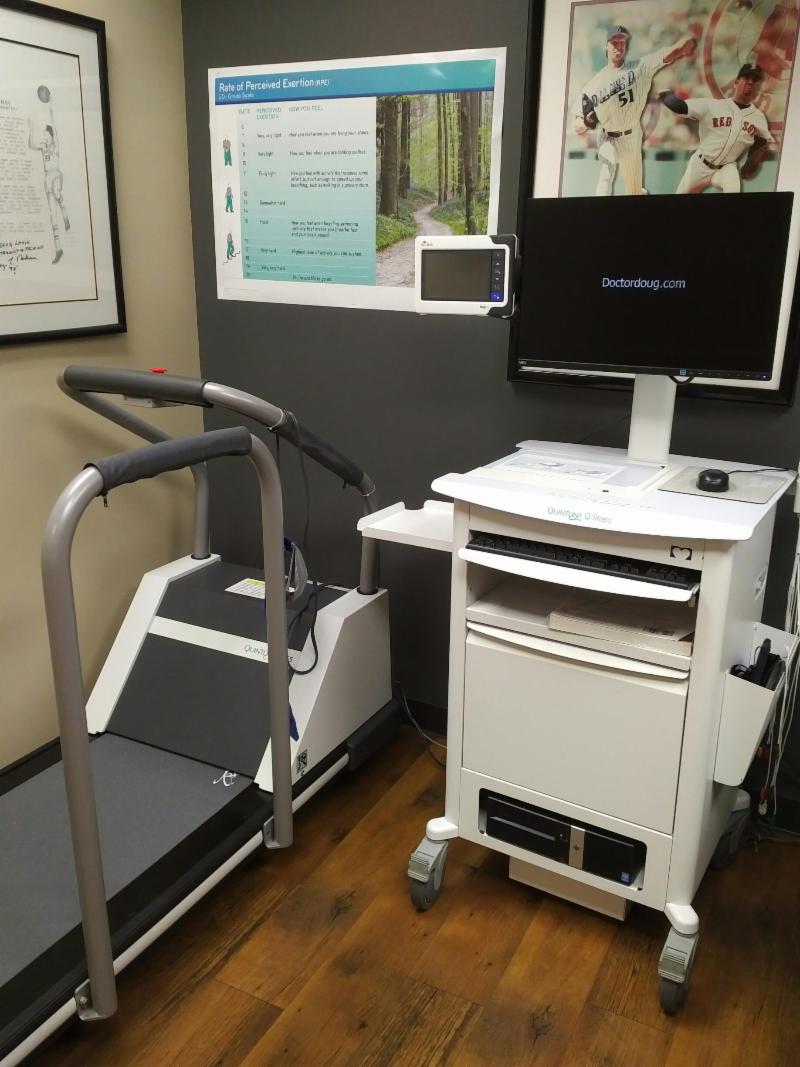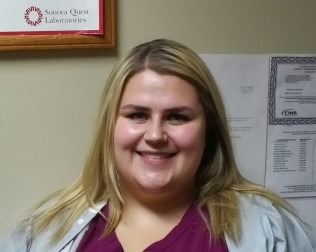|
Quick Links
|

|
|
Join Our List

 |
|
FROM THE DOC
|
 |
Remembering Dr. Lynch
Dr. Henry Lynch passed away at the age of 91 in June. It is because of the genetic connection that Dr. Lynch unraveled between colon cancer and colon polyps that prompt us today to screen for colon cancer using colonoscopy and Cologard test kits.
A genetic researcher who spent nearly his entire career in the corn fields of Nebraska at Creighton University, using old gumshoe methods of research to develop an understanding of inherited diseases by following family trees of the local population of his city.
Away from the centers of international research, he pursued his simple thoughts about cancer connections in families, and in so doing defined one of the hallmark genetic connections that stands as the quintessential genetic condition, Lynch Syndrome.
His story is profoundly enlightening in that his success was dictated by his passionate curiosity, his independence of mind that was reinforced by his remove from the centers of current research and dogma, and his tenacity to pursue high beliefs even while others doubted his theories (ones that are accepted today as completely obvious.)
Yours in good health,
- Dr. Lakin
|
|
|
|
VOL 15 / Issue: #3
|
Summer/ 2019
|
When It Comes to Cholesterol, Is Chicken As Bad As Red Meat?
|
|
It's a finding that surprised even the researchers.
Those who eschew steak in favor of chicken because they think it's healthier may be able to put lean beef back on the menu.
The small study found that consuming high levels of red meat or white poultry resulted in higher blood cholesterol levels than consuming an equal amount of plant protein. The findings held even when diets contained high levels of saturated fat, which increased blood cholesterol to the same extent as all three protein sources.
The key takeaway from the study, nutritionists say, is to
watch out for saturated fat, no matter the protein source. And when it comes to poultry versus red meat, "it's easier to get higher amounts of saturated fat from some cuts of red meat," said Elizabeth Kitchin, assistant professor of nutrition sciences at the University of Alabama at Birmingham who wasn't involved with the research.
Still, it was unexpected that poultry had the effect on cholesterol levels that it did.
"I was surprised that the effect of white meat on cholesterol levels was identical to the effects of red meat," said Dr. Ronald Krauss, study author and director of atherosclerosis research at Children's Hospital Oakland Research Institute.
In the study, 113 adults were randomly assigned to one of three diets for one month: rich in lean cuts of beef, lean cuts of chicken or turkey, or
plant proteins. After each month, the participants' diet was changed, so that each participant ended up trying all three diets. However, half of the participants' diets, regardless of protein source, were high in saturated fat; the other half ate a low-saturated fat diet.
After each month, the researchers measured the participants' levels of
LDL cholesterol, the so-called bad cholesterol. "Keeping all else constant - even the level of animal fat - the levels were higher on both sources of meat compared to the nonmeat diet," Krauss told NBC News.
Researchers said that the findings may not affect most people who aren't at high risk for heart disease. When participants' diets were low in saturated fat, the rise in LDL was minimal regardless of whether they ate chicken or lean red meat. But for the person actively trying to bring down high levels of LDL cholesterol, researchers said, it may be worth cutting back on both red and white meats, and relying more on plant proteins.
Red meat is a source of high-quality protein, zinc, iron and vitamin B12, but most nutritionists agree that it is best to choose a lean cut in a modest portion for optimal health benefits. The positives of having red or white meat can be canceled out if too much saturated fat, from any source, is included in one's diet.
The researchers cautioned against demonizing any food based on one study. "People often get the impression that if something raises cholesterol, it should be eliminated," Krauss said. "I don't want people to get too focused on an all or nothing approach."
Indeed, the
American Heart Association recommends a combination of poultry, fish, vegetable proteins and lean red meat for a heart-healthy diet.
"For many people a varied approach including any or all of these foods within the context of high fruit, vegetable and whole grain, nuts/seeds/legume intake along with polyunsaturated or monounsaturated oils can serve as a healthy eating pattern with plenty of variety," Dr. Linda Van Horn, a volunteer nutrition expert with the AHA, told NBC News.
Other outside experts also pointed out that diet is just one factor when it comes to overall heart disease risk.
"This study focused on just saturated fat," Kitchin told NBC News. "There are a lot of other risk factors for heart disease, like extra body weight and inactivity, that are big players in heart disease."
- MSNBC, Health
|
|
Dr Lakin's New Book:
The New Guide
|
Dear Patients,
This guide is one of a series of books meant to provide simple answers for day-to-day health questions. It is my effort to pass on 55 years of wisdom accrued as a child of a physician and as a Johns Hopkins-trained internist with over 30 years in practice. I hope this advice is helpful to you and your family. It's actually meant for my own.
DoctorDoug
Paper copy available in our office or you can read it online....
|
|
Would You Like to be 'Paged' for Your Appointment?
|

We have brought back the option to wait outside the office for your appointment and be 'paged' when it is your time.
Yes, now you have the option to wait outside the office; in the main lobby or even in your car!
When it is time for your appointment, we will page you so you can avoid close contact with any possible environmental infections.
|
|
 |
|
Sarah & Her Little Helper
|
 |
Simply check in at our front desk, then we will give you a pager to keep in touch. It is that easy!
Stay healthy my friends!
|
GET ON BOARD
THE Q STRESS SYSTEM!
|

'After 30 years our old treadmill machine finally gave up the ghost and conked out. State of the art in 1990, it was a workhorse and provided rather impressive results for heart screening in our patients .
As a result, we have now purchased the 2019 state-of-the-art treadmill to carry on with cardiac screening for patients at risk for heart disease.
The new equipment has cutting edge computer technology and systems that make it a pleasure to use and a pleasure to run on.
If you have concerns about your heart, we can consider doing a treadmill test to allay concerns about potential troubles.
Let's discuss this at your next physical exam. I'm excited to be able to carry on our high level of cardiac screening for out patients!'
Dr. Lakin
|
|
How To Get Better At Admitting You're Wrong. . . . .
|
 Struggling to admit our own fault can harm our relationships and our personal growth. Here's how to get better at keeping your ego in check.
There's nothing inherently wrong with having a little pride. It can propel you forward in tough situations and demonstrates a level of self-assuredness that we all strive for in our personal and professional lives. But there's a narrow line dividing
healthy confidence and stubborn ego, and one of the primary indicators you've landed on the wrong side is not being able to admit when you're wrong.
"Ego, at the rudimentary level is defined as 'person's sense of self-esteem or self-importance,'" says
Dr. Sanam Hafeez, a neuropsychologist based in New York City. "The prevailing ego-centric side of us likes to win, whether it's an
argument with a spouse or even a silly debate over which movie should have won the Oscar."
Struggling to admit our own fault, though - whether it was a major breach or a minor mess-up - doesn't really serve us well. Not only can it sour some of our closest relationships, but it can even be detrimental to our own personal growth. For insight into why it's so hard to hard to put ego aside and acknowledge our wrongdoing, and how to get better at doing so for the good of everyone, keep reading.
One reason why some can't admit fault is simply due to a lack of self-awareness. This can be a pervasive and ongoing issue, or simply a matter of having a "blind spot" in certain social situations. After all, if someone isn't even aware that they're in the wrong then it's impossible to admit wrongdoing in the first place.
In other cases, though, it's possible to be aware that you're wrong - whether mildly or outright - but still struggle to wave the guilty flag due to our precious egos.
This process is referred to as cognitive dissonance - an unconscious defense system that many of us employ to protect our ego. Dr. Kaplan says that those who struggle to admit fault, even when they're aware on some level of their own wrongdoing, often worry that showing imperfection will indicate some grave character deficit. It can make them feel weak, unlikeable, or even as if they're an inherently bad person. There's also often a strong undercurrent of fear that
makes them worry they'll lose respect or destroy a bond.
In other words, saying, "Yeah, I messed up and I'm sorry" can be terrifying. However, stubbornly denying our own wrongdoing frustrates our peers, colleagues, family members and partners. In doing so, we cause people to grow distant and end up isolating ourselves. It also stifles our personal growth.
"Since underlying the refusal to admit one's own mistakes is a fragile ego, our loved ones pushing away from us almost acts us like a self-fulfilling prophecy, confirming we are unlovable," says Dr. Kaplan. "[Additionally, it] perpetuates the pattern of denial and psychological defenses being employed. By not admitting fault, we're often not allowing ourselves to be vulnerable and let down our walls and defenses."
She adds that when someone perpetually exists in a place of avoiding vulnerability, they hold on to feelings of shame, guilt and fear, which over time can take a toll on mental health in the form of depression or
anxiety.
Conversely, Dr. Hafeez says, "Admitting we are wrong shows others that we are
compassionate,
empathetic, sympathetic, and
good listeners. It also shows that we are capable of being objective about ourselves and that we not 'perfect' or always right."
Admitting flaws allows others to see our vulnerability and can even endear them to us. It also opens the door to meaningful conversations and, therefore, personal and
relationship growth.
Dr. Kaplan says that we're all born with the uniquely human ability to self-reflect. Therefore, we all have it in us to accept responsibility for our mistakes. Sometimes that skill isn't nurtured, or we grow up in an environment where protecting the ego becomes priority number one. Still, with practice we can get better at admitting when we're wrong. Start here:
- Lean into the human condition. Dr. Kaplan recommends adopting this mantra and repeating it when you find yourself resistant to admitting fault: "I can admit I'm wrong because I am human, and we all make mistakes and I will still be loved in spite of this."
- Get introspective. Make a list of your flaws and ask yourself important introspective questions, says Dr. Hafeez. Good questions include: "Why am I afraid to be vulnerable?" "Do I have patience?" "Do I have anger issues?" "Am I overly jealous?" "Am I insecure?" "Am I selfish?" "What role did I have in a recent argument?" "How have my actions impacted others I care about?"
- Ask for feedback. "If it is challenging to personally take accountability for your mistakes it can be helpful to enlist those relationships in your life that are supportive, caring and willing to help," says Dr. Kaplan. "While it may seem like a really big step to make yourself so vulnerable, just remember how it can open you up to the acceptance and deep emotional connection you need."
- Be open to critique. In cases of "blind spots," - or when you're not aware of your wrongdoing - it's important to hear out others as they express frustrations or call you out. Dr. Hafeez says, "This skill involves taking the emotion out of the equation and looking at a scenario objectively and from the other person's perspective."
- Enlist a therapist. Therapy can serve as a rocket toward personal growth. "Typically, people who have been through therapy have developed the skill set to be introspective and realize where their weaknesses lie and what their fears are," says Dr. Hafeez. This process prompts a level of introspection that the average person cannot accomplish on their own.
- By Wendy Rose Gould, Healthy Relationships
Back To Top
|
|
Genetic Testing By Myriad, Available In Our Office Now. . . . .
|
The Myriad Hereditary Cancer test is a 28-gene panel that identifies an elevated risk for eight hereditary cancers:
Genetic screening is now a practical tool that we can use to help in the management of your health and the health of your family. It is recommended by the USPTF (United States Preventive Services Task Force.) This has implications for you, but also for your family, and I think it is worthwhile to consider.
We are at the beginning stages of applying this science in the clinical setting, so it is of limited scope of application. I want to help determine if it can be applied to your particular family history. This questionnaire is meant to do just that.
- Determine if you are at risk for cancers that run in the family
- Determine if genetic testing, at it's current state of development, is applicable to your situation
- Have the testing done to determine the best monitoring strategy, as well as helping guide you and your family in future testing and monitoring.
You will notice that this questionnaire has a specific focus on certain cancers, as that is the state of practical application of current genetic testing.
We are using a 24-gene panel from Myriad labs, the inventors of the BRCA test, which was the first large-scale genetic test validated for breast cancer family history.
For now, only a select group of patients can benefit. In the future, genetic testing will become commonplace and perhaps done routinely for everyone.
Answer the following questions and we will determine if you can benefit from this testing right now.
As for the cost, insurance coverage, and privacy issues related to such testing, this will be answered prior to running the test, so feel free to provide this information to initially see if you can benefit.
The process:
Complete this questionnaire
Submit a specimen of saliva (spit test).....this will be the material that is genetically tested.
Myriad labs will contact you to review cost, insurance, and privacy issues before any testing is performed.
Once completed, you will receive a detailed report and we can review it together to determine the best strategy for monitoring your health on an ongoing basis, as well as having specific advice for monitoring of your family members.
In the future, should additional testing become available that is valid to do, your current information will be used in such an analysis.
** Click HERE for more information and to take the Myriad Genetic test
to see if you are at risk.
If you think you are at risk and would like more information, please contact our office to schedule an appointment with Dr Lakin.
'Knowledge is Power!'
Back To Top
|
Measles Continues to Spread -
What You Need to Know. . . .
|
The United States is presently seeing the highest number of measles cases since the disease was considered eliminated in this country in the year 2000.
Measles is reported in
Arizona, California, Colorado, Connecticut, Florida, Georgia, Illinois, Indiana, Iowa, Kentucky, Maryland, Massachusetts, Michigan, Missouri, Nevada, New Hampshire, New Jersey, New York, Oregon, Pennsylvania, Texas, Tennessee, and Washington.
Since 2001, the Red Cross and our partners in
the Measles & Rubella Initiative have vaccinated more than two billion children in 88 countries around the world to protect them from both of these deadly diseases. Our partners in this lifesaving program include the United Nations Foundation, the CDC, UNICEF and World Health Organization. With this latest outbreak here at home, the Red Cross wants everyone to know about measles - just how contagious it is, how to recognize it, what you should do if exposed to measles and more.
HOW DID THIS OUTBREAK HAPPEN?
Measles is still a common disease in some parts of the world and travelers either bring measles into the U.S. or someone from this country gets measles while traveling and brings it home. The disease can spread in a community where a large number of people have not been vaccinated, which the CDC reports is what has occurred.
All 50 states and the District of Columbia require vaccinations for children entering kindergarten, however all states also provide medical exemptions to these requirements and some states also offer exemptions for religious and philosophical reasons.
ABOUT MEASLES
According to the CDC:
- Measles is a highly contagious virus that lives in the mucus of an infected person. It can spread to others through coughing and sneezing.
- The measles virus can live for up to two hours in a space where the infected person coughed or sneezed. If other people breathe the contaminated air or touch the infected surface, then touch their eyes, noses, or mouths, they can become infected.
- Measles is so contagious that if one person has it, 90% of the people close to that person who are not immune will also become infected.
- Infected people can spread measles to others from four days before through four days after the rash appears.
- Early symptoms include high fever, a cough, runny nose and red, watery eyes. Two or three days later small while spots may appear inside the mouth. Within three to five days the red measles rash breaks out on the face and spreads down the body to the feet. The patient's fever may go to 104 degrees or higher. In a few days the fever goes down and the rash fades.
- If you have been exposed to measles, call your doctor immediately and let them know. Your doctor can determine if you are immune to measles based on your vaccination record, age, or laboratory evidence, and make special arrangements to evaluate you, if needed, without putting other patients and medical office staff at risk.
Dr Lakin's Thoughts:
If you were born before 1957, then you did not get vaccinated...but you did get the measles with near certainty as there was no vaccine and the measles was ubiquitous throughout the US and was impossible to avoid. Because it is so very contagious, everyone (99% of people were infected) is essentially immune.
The modern measles since dose vaccine was begun in 1962 and carried out through 1967. This single dose immunization was approximately 90% effective, but immunity may have wained for this 'notch group'....1957-1967. This group should consider testing for immunity with a blood test (Rubeola IgG testing.... Rubeola is the old name for measles)...or just get a booster of MMR. That is the other option.
Finally, for those after 1968 and later, they are immune based on having obtained the standard 2 dose measles vaccinination, which was the schedule developed for that birth-year and beyond. 1968 and beyond is also 99% effectively immune.
So...if you are in the notch group, you could consider a lab test or 2nd MMR vaccine.
|
|
Ascenda Introduces New Molecular Stool Test That Detects C. Difficile Toxin A and B
|

Testing available in our office now!
Ascenda BioSciences is proud to introduce a NEW molecular stool test that detects C. diff toxin A and B (2 separate results). This test is intended for all types of patients with diarrhea, especially those who live in assisted living facilities
Gastrointestinal infections in both pediatric and adult patients account for significant morbidity and mortality worldwide (Schlenker and Surawicz 2009). In developing countries, an estimated two to four billion episodes of infectious diarrhea occur annually (Navaneethan and Giannella 2008). In addition, immunocompromised hosts, including HIV patients, solid-organ transplant recipients or patients requiring therapy for chronic inflammatory diseases are susceptible to gastrointestinal infections (Thom and Forrest 2006). Mild diarrhea can lead to absenteeism from school or work and may require treatment by a health care provider. Patients with severe diarrhea may be hospitalized and some may develop more serious sequelae such as Guillain Barré syndrome and hemolytic uremic syndrome (HUS), and in some cases death (Fischer Walker, Sack et al. 2010). Nearly three percent of neonatal mortality and 17 percent of under-five child mortality is attributable to diarrhea (Patel, Mamtani et al. 2010).
Clostridium difficile is the most common cause of nosocomial infectious diarrhea in developed countries and is the major cause of antibiotic-associated pseudomembranous colitis (Yoo and Lightner 2010; Navaneethan and Giannella 2008).
C. difficile is a Gram-positive anaerobic rod-shaped bacterium belonging to the Clostridiaceae family that causes diarrhea following the production of two toxins, enterotoxin A (the product of the tcdA gene) and cytotoxin B (the product of the tcdB gene) (Yoo and Lightner 2010; Schlenker and Surawicz 2009; Persson, Torpdahl et al. 2008). In the US, the number of hospitalized patients discharged with "intestinal infection due to C. difficile" (as the discharge diagnosis) more than doubled between 2000 and 2009 from approximately 139,000 to 336,000 (CDC, 2012).
Contact us today for more information about how to order the test at our office.
|
|
The What, Who, and Why of
Pretreatment Antibiotics
|
 |
|
 |
Dr Marie Jacobs
|
Usually antibiotics are used to treat bacterial infections. However, there are occasions when it is suggested that patients take antibiotics prior to treatment to decrease the chance of infection. This is called antibiotic prophylaxis.
During various dental treatments, oral bacteria may enter the bloodstream. In most people, their immune system kills these bacteria. There is concern, however, that in some patients, bacteria from the mouth can travel through the bloodstream and cause an infection somewhere else in the body. Antibiotic prophylaxis may offer these patients extra protection - not only for preoral-care, but perhaps also for other procedures as well.
Who Might Benefit?
Individuals with certain heart conditions may be at increased risk of developing infective endocarditis (IE) - an infection of the lining of the heart or heart valves. To protect against IE, or limit the effects should an infection develop, the American Heart Association (AHA) recommends that antibiotic prophylaxis be considered for people with the following high-risk issues:
- an artificial heart valve or who have had a heart valve repaired with a prosthetic material
- a history of IE
- a heart transplant that develops a valve problem
- certain congenital heart defects (present from birth) including....
- cyanotic congenital heart disease (birth defects with oxygen levels lower than normal), that has not been fully repaired, including children who have had surgical shunts and conduits
- a congenital defect that has been completely repaired with prosthetic material or a device for only the first six months after the repair procedure because endothelialization, integration with the heart tissue, of prosthetic material occurs within six months of the procedure
- repaired congenital heart disease with residual defects, such as persisting leaks or abnormal flow at or adjacent to a prosthetic patch or prosthetic device.
Additional Patients Considered for Antibiotic Prophylaxis
Pretreatment antibiotics is not right for everyone and, as with any medication, antibiotics should be used only when the benefits outweigh the risks of taking them. Side effects from antibiotics can include nausea, upset stomach, or allergic reactions, some of which can be serious. Other risks are related to the development of antibiotic resistance in bacteria. This can complicate future treatment of infections such as strep throat, "pink" eye, meningitis, etc.
Regarding people who have had a hip, knee, or other joint replacements, the American Dental Association and the American Association of Orthopedic Surgeons updated guidelines in 2012. The ADA's Council on Scientific Affairs in 2015, based on a 2014 systemic review, issued additional guidelines which continued to discourage prophylactic antibiotics for general use for patients with prosthetic joint implants. However, there are exceptions which should be recognized and addressed.
Depending on one's personal medical history, you may be a candidate for premedication despite the antibiotic risks. Antibiotic prophylaxis may be prescribed for patients who also have a depressed immune system, diabetes, rheumatoid arthritis, cancer, undergoing chemotherapy, or chronic steroid use (in addition to the cardiac conditions already indicated) - all of which can increase the risk of orthopedic implant infection because of their ability to successfully fight infections is compromised. In addition, it is important to recognize the fact that there is a myriad of other conditions that either patients, physicians, or dentists may feel antibiotic prophylaxis prior to treatment might be warranted. The prevention of the development of infections at remote locations by bacteria normally associated with the oral cavity or other treatment sites, is obviously in the best interest of the patient.
Because it is significantly important for individuals who are at the greatest risk of developing a systemic infection to use antibiotic prophylaxis, always discuss the need for you to premedicate with your dentist and/or physician to determine if it is appropriate for you.
Here's to your good health.
Marie C. Jacobs, D.D.S.
Professor Emerita Loyola University Chicago
|
DR. LAKIN'S NEW SECURE PATIENT PORTAL
'MyHealthRecord.com'
|
Dr. Lakin and staff are very excited to announce we have upgraded our secure patient portal!
We changed vendors, and our new secure portal,
MyHealthRecord.com, is easier to use and easier for us to respond to your requests.
At your convenience
- View your health record from any Internet-enabled device
- Exchange secure messages with Dr. Lakin or our staff
- Request and manage appointments
Anytime access
- Lab orders
- Test results
- Upcoming appointments
- New Document and articles from Dr Lakin

To access our new patient portal, MyHealthRecord.com, you are required to complete a short questionnaire. This is a very simple process.... quick and easy. If you need assistance, we are always here to help.
Call us for your invitation email!
It will give you all the information you need to use our secure portal, MyHealthRecord.com, for your medical care!
Back To Top
|
|
TOM'S TRAVELS:
Silver City Is a Southwest Treasure. . . .
|

A favorite getaway only a day's drive from Scottsdale but depositing you in a southern New Mexico culture is Silver City. We prefer to avoid I-10 and take US routes 60 and 70 to get there, doing an overnight in Duncan, AZ in a B and B called the Simpson Hotel.  You will be welcomed with an afternoon tea and treated to a gourmet breakfast of your choice. This is the Arizona country that gave us Sandra Day O'Connor and author Cormac McCarthy. You will be welcomed with an afternoon tea and treated to a gourmet breakfast of your choice. This is the Arizona country that gave us Sandra Day O'Connor and author Cormac McCarthy.
Silver City lies in mile high mountain country (think Prescott) and hosts Western New Mexico University, so there is no shortage of college town cultural activity. Attractive territorial and art deco architecture lines the main street that parallels a creek which years ago flooded the town, wiping out several blocks. A park running along the creek was created and is known as the Big Ditch, quite a unique place where you are strolling in a park twenty feet below street level. 
 Travel magazines are giving Silver City a deserved reputation for its fine and varied dining. A colorful coffee shop, The Tranquil Buzz, with living room decor is the daily gathering place for locals and repeat visitors like us. Travel magazines are giving Silver City a deserved reputation for its fine and varied dining. A colorful coffee shop, The Tranquil Buzz, with living room decor is the daily gathering place for locals and repeat visitors like us.
Antique shops and art galleries abound and I was impressed with the colorful stock of yarn at a weaving establishment. The city has a historical museum where I found a branding iron with all three of my initials, TLH. What a coincidence, but perhaps a sign that this part of New Mexico is going to continue drawing us for weekend getaways. 
I would be happy to share travel info with you at my email:
|
|
Rx Prior Auth News From Jeff
|

Summer Stock

The heat is on. Summer is here. Whether your plans this season include sitting poolside, short jaunts, nationwide or international travel or just a 'staycation' in your immediate area, it's wise to have your prescriptions up-to-date and included in your personal activities and travel plans.
Here are a few thoughts and tips to ensure that your prescription needs are cared for with the adage in mind that "An ounce of prevention is worth a pound of cure."
- Ensure that your current quantity of medication(s) is at par levels. Know about prescriptions that may need re-fills or renewal and could trigger a prior authorization (PA) in the months ahead. It might not be a problem if you are close to or stay at home and have easy access to your doctor's office. However, if you take a vacation(s) or frequent trips out of your immediate area you may encounter problems, delays or even denials if you attempt to renew or re-fill a prescription while away. For renewals there really is no place like home.
- Is one or more of your medications running low? Does it look as if they might run out sooner than later and especially if you are traveling and not firm on a return date? Have prescriptions taken care of in advance by your regular pharmacy and/or physician. They know you and your medical and prescription history. Don't expect an unfamiliar provider(s) to be as accommodating and especially if your prescription re-fill is a "controlled medication" or requires a PA. Also, pharmacy staffs take vacations during summer and they may be short-handed and slower to act.
- Most insurance plans allow their members to obtain "vacation overrides" if you must re-fill early before a trip or forget to do so before traveling; medication interruption can be life-threatening. Your Plan may give the okay, however, don't assume that a distant pharmacy - even a chain-pharmacy - can access your prescription history and fix you right up. There may be delays while they contact your "home" pharmacy/physician for prescribing clarification and clearance.
You can always purchase forgotten items such as sunscreen, sunglasses and seasonal items anywhere. Medications are a stickier issue. You can run off to catch the sun, sand and surf but don't be caught high and dry without your medications. Consider your prescription needs in advance and stock-up as safe and necessary for peace of mind as you enjoy all activities the summer months have to offer.
|
|
Note From Our Biller:
Two Types of Medicare Wellness Visits
|
|
-Welcome to Medicare Preventive Visit-
-Annual Wellness Visit-
The
Welcome to Medicare Preventive Visit
(also called an Initial Preventive Physical Exam - IPPE) applies only to new Medicare enrollees and is a one-time appointment a patient can schedule when they enroll in Medicare for the very first time. The Welcome to Medicare Preventive Visit must occur within the first 12 months of Medicare enrollment for Medicare to pay. Once the initial 12 month period has passed the Welcome to Medicare Preventive Visit benefit is lost. This benefit will only be paid out once per lifetime.
The purpose of having a Welcome to Medicare Preventive Visit is to establish a baseline level of general health and to encourage a proactive approach to healthcare as the years pass. Many individuals consider themselves to be in excellent health when they enter the Medicare program; for this reason some patients choose not to utilize their Welcome to Medicare Preventive benefits. While utilizing this benefit is o
ptional this particular benefit exists to assist you and your provider in maintenance and / or prevention of disease.
The time it takes to complete an appointment for a Welcome to Medicare Visit is dependent on each individual. For patients who have been in the practice for many years this visit may not feel much different than office visits done in the past. However, the questionnaires and assessments that you will be asked to complete are relevant to meeting Medicare's coding and charting requirements and are different from symptom oriented appointments. This visit will take into account your medical and social history, assess potential risk factors for depression and mood disorders, it will make note of functional abilities and your level of safety, and includes a height, weight, body mass index and blood pressure. Based on the above evaluations further testing may be scheduled as needed.
The
Annual Wellness Visit (AWV) is a yearly appointment with your primary care provider that creates or updates a personalized health care plan. The visit is intended to prevent illness based on a person's current health status and associated risk factors. It is important to know that an Annual Wellness Visit is not a head-to-toe physical.
Medicare will generally cover an Annual Wellness Visit if you have had Medicare Part B for over 12 months and a minimum of 12 months has passed since your previous exam. There are many different provider types who can bill for an Annual Wellness Visit but the visit is only covered by Medicare once per 12 month period. While it is most common to receive this service from your primary care physician it can be billed by gynecologists, cardiologists, nurse practitioners and even at screening health fairs you may attend. If an Annual Wellness Visit is denied for frequency your denial reason will state that the benefit has been exhausted and the balance is your responsibility to pay.
During your visit paperwork will be provided to you called an Advanced Beneficiary Notice. The ABN explains which services Dr. Lakin intends to provide and the estimated cost of said services. The ABN allows you the option to accept or decline the services and is viewed by Medicare and Dr. Lakin as an explanation of cost and your agreement to pay should Medicare deny your claim. You do have the option to decline the listed services at which point it is most likely services will not be performed. The ABN is the best document available to estimate what your financial liability could be if Medicare does not pay your claim.
During your Wellness Visit Dr. Lakin may discuss, manage or discover a new or existing health issue that requires decision making, diagnosis and management. This additional care is considered diagnostic and is specific to that concern and this portion of your visit will be itemized and billed separately from your Annual Wellness Visit. If this occurs you will see two separately identifiable charges on your Medicare Explanation of Benefits that are processed and paid independently according to your insurance benefits.
It is ultimately up to each patient to know when they are eligible for their Wellness Visit. The most definitive way to confirm your eligibility for this service is to contact Medicare at (800) MEDICARE - (800) 633-4227 - and ask. You will need to have your Medicare ID # handy and state you want to know if a Medicare Wellness Visit has previously been billed and paid and when you are eligible for your next one.
If you need more information on Medicare plans, please contact Veronica.
|
|
Doctor's Visits:
Why Checkups Are Vital. . . . . .
|

Annual Physicals 101:
When you were little, your parents probably made sure you had an annual checkup with your doctor. But as you've grown older, you may have gotten out of this habit.
Health professionals stress that these regular exams are important to help identify risk factors and problems before they become serious. If diseases are caught early, treatments are usually much more effective. Ultimately, having a regular doctor's visit will help you live a long and
healthy life.
It is also very important for you to play an active role to get the most out of your doctor's visit. Before your exam, review and update your family health history, be prepared to ask if you're due for any general screenings or vaccinations, and come up with a list of questions if you have particular health concerns.
During your actual doctor's visit, don't be shy about getting your questions answered. Also, if the doctor gives you advice about specific health issues, don't hesitate to take notes. Time is often limited during these exams, but by coming prepared you're sure to get the most out of your checkup.
Have you scheduled your physical for 2019 yet?
|
|
Peanut Butter Banana Oat Balls:
The Perfect Sweet Snack
|
|
'We warned you: These high-fiber bites are kind of addictive.'
If granola bars are one of your go-to snacks, chances are it's partly because they're so portable (toss in bag, rip open, eat.) But they can also be high in sugar and contain additives and artificial flavors; not to mention the price tag.
That's why these peanut butter banana oat balls might just be your new favorite snack for quenching a sweet craving. You can make them yourself with just a handful of ingredients, all of which are pantry staples (and dirt cheap). These snacks are so easy to make that even kids can help whip them up-and gobble them up. (After all, research shows many kids are more willing to try food
if they help prepare it.)
These healthy protein bites are quite a bit healthier than the average snack bar. First, the banana adds
fiber, potassium, and all-natural sweetness. The
protein comes from whole food sources: peanut butter and egg (not whey or soy powders). Using a sugar substitute (look for natural sweeteners like stevia) cuts the sugar content to make these peanut butter bites a bit healthier for people with diabetes or who follow low-sugar diets.
Oh, and one more tip: Skip the
reduced fat peanut butter. You may feel inclined to grab that jar that boasts having "25% less fat!", but remember that nuts are a
healthy, monounsaturated fat; there's no need to reduce it. Plus, when brands cut fat from nut butters, they often
replace it with sugar and additives to keep the flavor creamy and tasty.
Ingredients
- 1 ripe banana, mashed
- 1 teaspoon vanilla extract
- 2 cups rolled oats (gluten-free if needed)
- 1/2 teaspoon salt
- 1/2 cup peanut butter, heated in microwave for 30 seconds
- 1 egg
- 2 tablespoons Splenda Brown Sugar Blend
- 1 teaspoon baking soda
- 1/2 cup milled flaxeed
Instructions
1. Preheat oven to 350 degrees. Line a baking sheet with parchment paper.
2. In a medium bowl whisk together peanut butter, banana, egg, vanilla and Splenda Brown Sugar blend.
3. In a small bowl mix together oats, baking soda and salt. Add milled flaxseed.
4. Add oat mixture to peanut butter mixture and mix well.
5. Scoop batter into 1 tablespoon balls and place on baking sheet. Bake for 10-12 minutes. Cool on wire rack.
|
|
Insights By Steve: Check it Out!
|
 |
|
 |
Insight By Steve (Author)
|
"Five Foods That Fight Sunburn"
.... and more news you can use!
Back To Top
|
|
We Need Your Help!
|
 Keeping you on your correct medication is as important to us as it is to you. With your help, we can be more efficient and be sure you are getting your refill requests on time and to your correct pharmacy. Keeping you on your correct medication is as important to us as it is to you. With your help, we can be more efficient and be sure you are getting your refill requests on time and to your correct pharmacy.
Tips:
1. If you need a refill, be sure to call your pharmacy FIRST, not our office. They will know if you have more refills, and if not, they will call/fax/electronically message us with your request. Then we will contact you if there is a question or concern.
2. Remember to call your pharmacy in plenty of time so you do not run out of your medications. Sometimes we need up to 48 hours to complete a request and we do not want this to be a hardship for you.
3. Register and use our SECURE PATIENT PORTAL for refill requests. We monitor this continually and again will contact you if there is a problem.
4. Remember we do not refill pain or routine medications on Fridays or weekends and all pain medications must be picked up at our office. We cannot mail or any medications outside our office. Please plan ahead and make arrangements!
We are always here to help you and appreciate the opportunity to care for your healthcare needs!
Yours in good health,
Dr. Lakin & Staff
|
|
Sonora Quest Phlebotomist Change
|

Sorry to say good-bye to Amber, our Sonora Quest phlebotomist.... Amber is leaving to work closer to her home.
Please join us in thanking Amber for her help for the past four years and also welcome our NEW phlebotomist assigned to our office, Taylor.

Best wishes to Amber and welcome Taylor!
|
|
|
Have a Safe & Healthy
Summer!
Dr. Douglas Lakin & Staff
Paradise Valley Medical Clinic PC
|
|
|